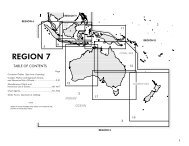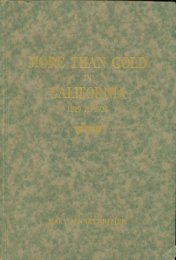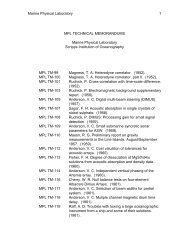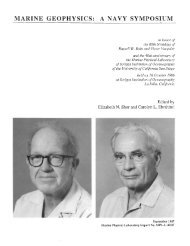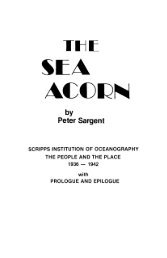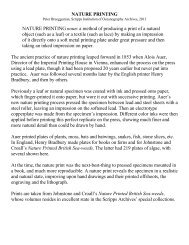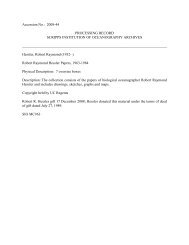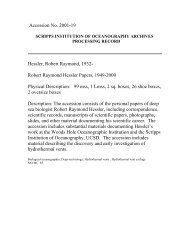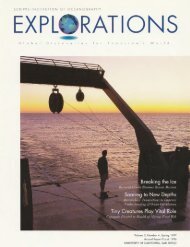Bill and Bob, Where Did You Come From (LaFond, Gehring, Imes ...
Bill and Bob, Where Did You Come From (LaFond, Gehring, Imes ...
Bill and Bob, Where Did You Come From (LaFond, Gehring, Imes ...
You also want an ePaper? Increase the reach of your titles
YUMPU automatically turns print PDFs into web optimized ePapers that Google loves.
ature <strong>and</strong> water samples, were taken weekly at several<br />
stations along the California coast, sent to the Institute<br />
<strong>and</strong> temporal plot com pi led. Since I worked in Dr.<br />
McEwen's outer office, I became closely associated<br />
with him. He was somewhat shy <strong>and</strong> bashful, but<br />
kind <strong>and</strong> helpful. He introduced me to the drafting<br />
equipment containing a complete set of Wrico lettering<br />
guides which improved the quality of my drawings.<br />
Dr. McEwen was well versed in physical oceanography.<br />
He also did a· little theoretical work <strong>and</strong> made a<br />
statistical study of rainfall, for which the San Diego<br />
Gas <strong>and</strong> Electric Company gave him a little money,<br />
some of which later helped continue my employment,<br />
i.e., computing Fourier analyses from series of previous<br />
rainfalls. However, at that time predicting rainfall<br />
a year in advance was a long way from being 100%<br />
successful.<br />
Ruth McKitrick was the only secretary in Ritter<br />
Hall. Half her time was spent for Dr. Moberg <strong>and</strong><br />
half her time with Dr. McEwen. She was attractive<br />
<strong>and</strong> efficient. She lived in La Jolla <strong>and</strong> commuted<br />
with Tillie Genter in the Institute's touring car which<br />
served as a bus <strong>and</strong> called at the La Jolla post office<br />
for the mail in the morning <strong>and</strong> evening. There was no<br />
mail delivery.<br />
Dr. McEwe.n had an assistant, Stan Chambers, who<br />
worked himself into a routine job of determining salinity<br />
of the water samples received from coastal stations,<br />
by the use of a clever arrangement of a hydrometer<br />
attached to one arm of an analytical balance.<br />
He was also responsible for maintaining records from<br />
a pyroheliometer, tide gauge <strong>and</strong> seismograph.<br />
Dr. Francis Sumner, one of the earliest, 1913, members<br />
of the staff, was investigating protective coloration<br />
changes developed by fish in adapting to their<br />
immediate environment. I was sympathetic to the<br />
poor halibut, which, when placed on a black <strong>and</strong> white<br />
checkerboard background, tried to change its body<br />
colors to match the one-inch squares. Previously,<br />
Dr. Sumner had worked on the genetic traits of mice,<br />
carrying on his work in a then vacant "mouse house"<br />
39




